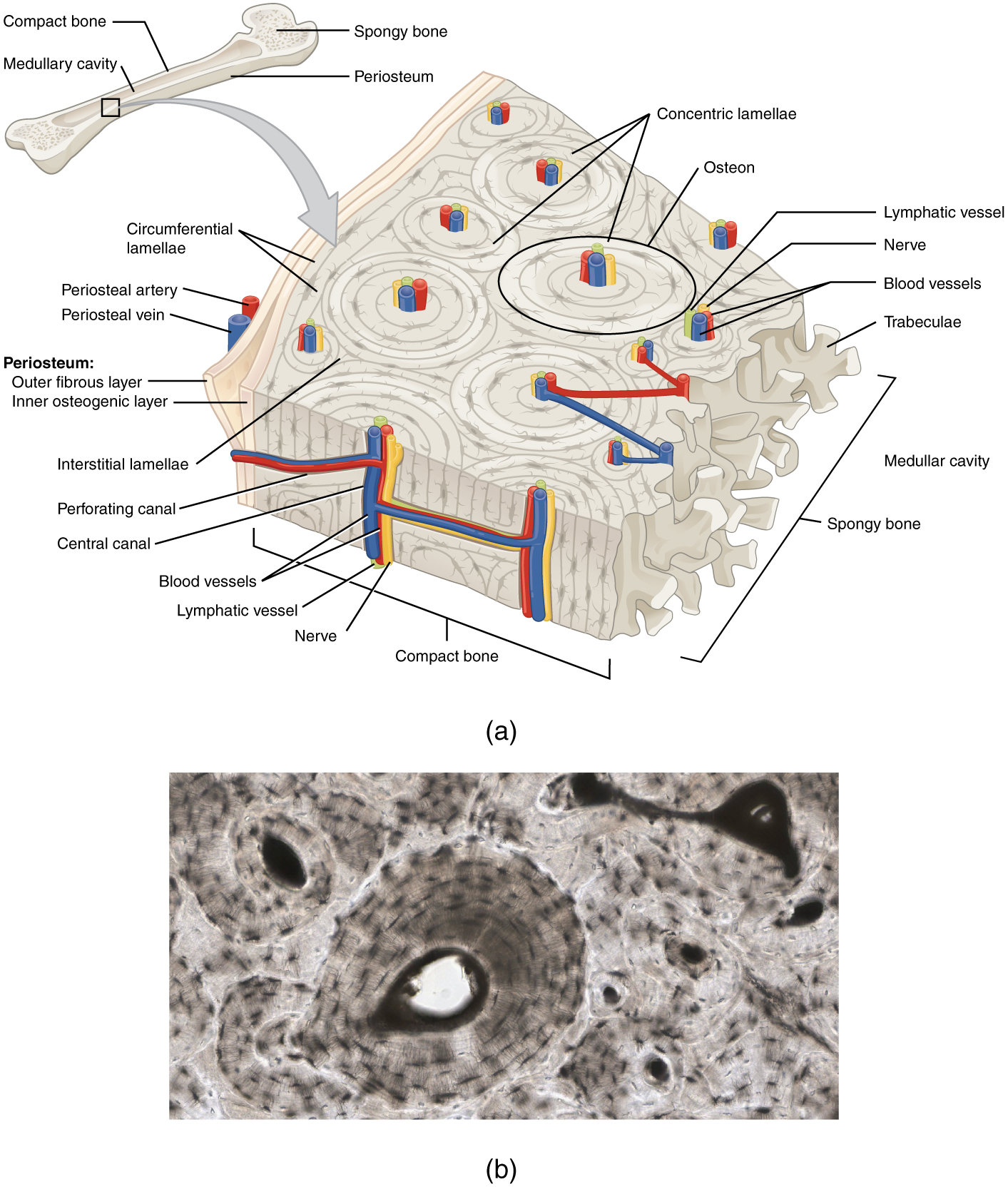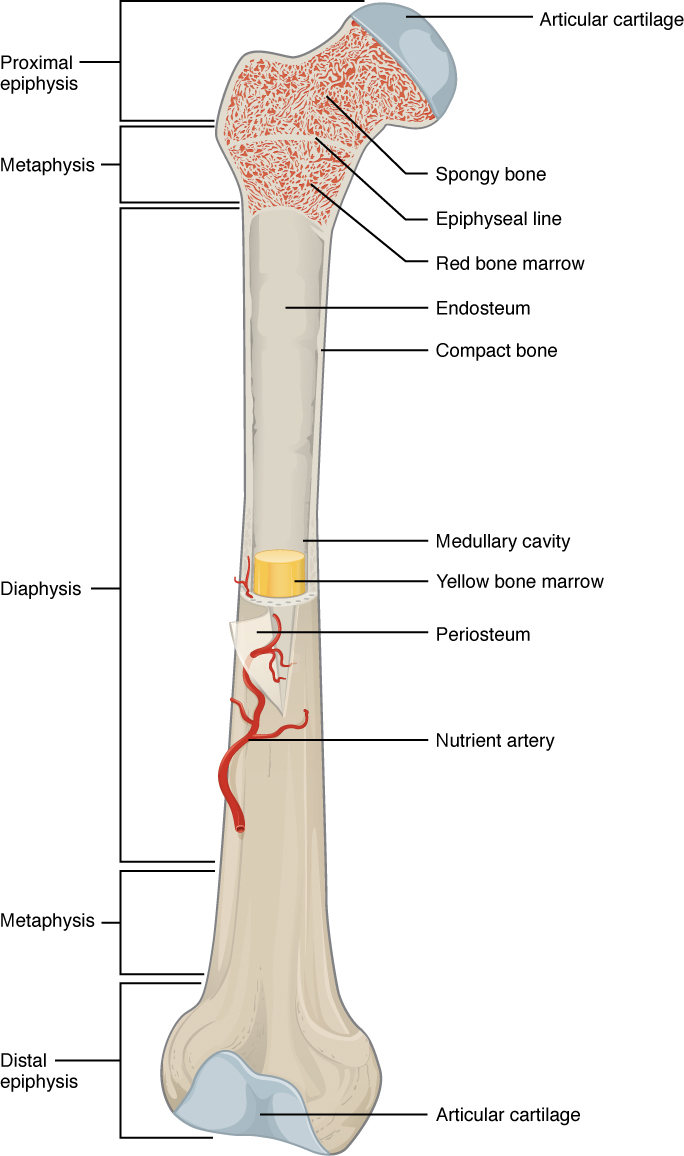Bone is a mineralized connective tissue that exhibits four types of cells. As shown in Figure 1146 bone tissues are composed of four different types of bone cells.

Seer Training Structure Of Bone Tissue
It is a temporary structure soon replaced by mature lamellar bone.

. Observe and describe the processes of bone remodeling and bone growth. The harder outer tissue of bones. Osteoblasts are the cells that make new bone.
Share on Pinterest. Blood Cell Productionred marrow 4. Bone tissue is comprised of four types of cells.
Five Primary Functions of the Skeletal System 1. A specialized connective tissue covering all bones of the body endosteum A layer of cells lining the inner surface of bone in the central medullary cavity. Osteoblasts osteocytes osteogenic cells and osteoclasts Figure 5.
Bone is a mineralized connective tissue that exhibits four types of cells. The two principal components of this material collagen and calcium phosphate distinguish bone from such other hard tissues as chitin enamel and shell. Leverageforce of motion 2012 Pearson Education Inc.
In this section we illustrate the anatomy and structure of bone tissue as the basis for studying tissue structure function and mechanically mediated tissue adaptation. Is the strongest type of bone tissue. Bone is a modified form of connective tissue which is made of extracellular matrix cells and fibers.
Bone exerts important functions in the body such as locomotion support and protection of soft tissues calcium and phosphate storage and harboring of bone marrow 3 4. Bone is living tissue that makes up the bodys skeleton. The diaphysis is the hollow tubular shaft that runs between the proximal and distal ends of the bone.
The diaphysis is the tubular shaft that runs between the proximal and distal ends of the bone. The outer walls of the diaphysis cortex cortical bone are composed of dense and hard compact bone a form of osseous tissue. Bone tissue is a mineralized and viscous-elastic connective tissue which exerts crucial functions in our body such as support and protection of other tissues and mineral storage.
The smooth tissue at the ends of bones which is covered with another type of tissue called cartilage. Compact Bone Tissue Compact bone or cortical bone forms the hard external layer of all bones and surrounds the medullary cavity or bone marrow. They make a protein mixture that is composed primarily of collagen and creates the organic part of the matrix.
Storage of Mineralscalcium and Lipidsyellow marrow 3. They produce layers of hard tissue made primarily of calcium and phosphate until they are completely surrounded at which point they become osteocytes. There are two types of bone tissue.
Bone tissue is primarily constructed of a protein known as collagen that is also found in other types of connective tissue like cartilage. 1 Compact Bone Tissue Contains few spaces and is arranged in repeating structural units called OSTEONS. 6-2 Classification of Bones.
Compact bone tissue consists of units called osteons or Haversian systems. The sponge-like tissue inside bones. Inside the diaphysis is the medullary cavity which is filled with yellow bone marrow in an adult.
Woven bone primary bone Appears in embryonic development and fracture repair as it can be laid down rapidly. The high concentration of calcium and phosphate based minerals throughout the connective tissue is responsible for its hard calcified nature. It is also called osseous tissue or cortical bone and it provides structure and support for an organism as part of its skeleton in addition to being a location for the storage of minerals like calciumAbout 80 of the weight of the human.
Structure of Bone Under the microscope bone can be divided into two types. Osteoblasts osteoclasts osteocytes and osteoprogenitor cells. Osteoblasts bone lining cells osteocytes and osteoclasts 1 2.
Compact bone is organized as parallel columns. Bone exerts important functions in the body such as locomotion support and protection of soft tissues calcium and phosphate storage and harboring of bone marrow 3 4. We first begin by describing the hierarchical levels of bone structure anatomy and then describe how these levels are constructed by bone cells removing and adding matrix.
Bone rigid body tissue consisting of cells embedded in an abundant hard intercellular material. It consists of osteoid unmineralised ECM with the collagen fibres arranged randomly. It is found beneath the periosteum of all bones and makes up the bulk of diaphyses of long bones.
Each osteons consists of a central haversian canal with its concentrically arranged lamellae. Four types of cells are found within bone tissue. The fundamental components of bone like all connective tissues are cells and matrix.
Bone tissue makes up the individual bones of the human skeletal system and the skeletons of other vertebrates. Osteoblasts bone lining cells osteocytes and osteoclasts 1 2. The walls of the diaphysis are composed of dense and hard compact bone.
Is the bone cell responsible for forming new bone and is found in the growing portions of bone including the periosteum and endosteum. Bones are composed of two types of tissue. Each of these cells has a unique function and together they maintain homeostasis of the bone tissue via bone remodeling the replacement of old bone tissue with new bone tissue.
The diaphysis is the tubular shaft that runs between the proximal and distal ends of the bone. Bone is a tissue in which the extracellular matrix has been hardened to accommodate a supporting function. A hard outer layer that is dense strong and durable.
It makes up around 80 percent of adult bone mass. It provides protection and strength to bones. The hollow region in the diaphysis is called the medullary cavity which is filled with yellow marrow.
The walls of the diaphysis are composed of dense and hard compact bone. Volkmanns canal central canals are connected by these cross canals haversian canal travels through the center of each osteon blood vessels for V and H canals concentric lamellae. Compact bone also called cortical bone is the hard stiff smooth thin white bone tissue that surrounds all bones in the human body.
Osteoblasts osteocytes osteoclasts and osteogenic cells. Bone can adapt itself through a remodeling process which is controlled by. Osteoblasts are bone cells with a single nucleus that make and mineralize bone matrix.
There are 3 types of bone tissue including the following. The hollow region in the diaphysis is called the medullary cavity which is filled with yellow marrow.

6 3 Bone Structure Anatomy Physiology

Bone Structure Anatomy And Physiology


0 Comments